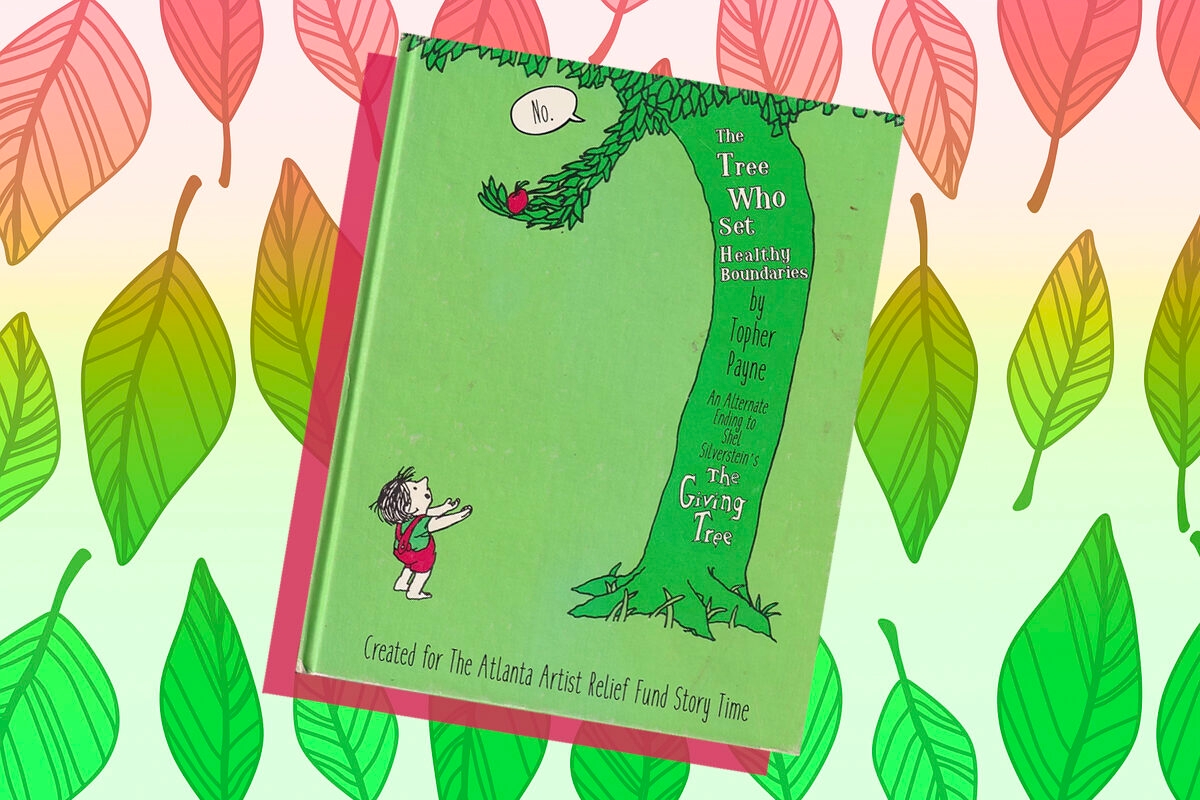Like many children’s books we grew up with, The Giving Tree, a Tu Bishvat classic written by a Jewish author and musician Shel Silverstein, has a pretty questionable moral message. Basically, it’s about a borderline abusive, one-sided relationship: The boy in the story takes and takes from the tree; the tree gives and gives until it has literally nothing left but a stump.
Luckily, one talented playwright from Georgia, Topher Payne, reimagined the book’s conclusion. He gave it the emotionally healthy ending its readers deserve and renamed it The Tree Who Set Healthy Boundaries.
I grew up reading and loving The Giving Tree, in its Hebrew iteration, which adds an extra layer of valor to the book’s arboreal protagonist. Its Hebrew title is Ha’Etz Ha’Nadiv, which means “The Generous Tree.” The way I read it, or the way it was read to me, showed the tree as a parental — more precisely, a maternal figure (the tree is a “she“ after all), that is so selfless that it will give its whole self for the happiness of its inter-species kid.
Instead of thinking, “Wow, this kid is such an asshat,” I grew up believing that I, too, should aspire to be as kind and generous as the tree! Oof.
That — along with, you know, most of pop culture — gave me the idea, that as a woman, and a mother, a good quality to have is to completely erase yourself for the happiness of others. Some of the choices I’ve made as a result of said lesson have not been great andI know I’m not the only one — how many of us have excessively put the needs of our spouses and kids ahead of ours?
Luckily, that’s not a moral value I’m going to pass on to my children, because if I do read them the book, I will be using Payne’s version.
Payne’s alternative ending begins the moment the kid comes over, asking for wood to build a house. Instead of acquiescing and giving him all its branches, the tree is all: “Okay, hold up. This is getting out of hand.” It then talks about healthy boundaries and how the boy ought to show interest in the tree as a full tree-being, and not just come around when he needs something.
Both the tree and the kid go on to fulfill themselves: The boy goes to culinary school, the tree takes an online course in small business management, they open up a bakery with the best apple pies, and nobody ends up a dry, dead stump. It’s a funny rewriting and very true to Silverstein’s form. It’s also well formulated and surprisingly — nay, extremely — profound.
“Setting healthy boundaries is a very important part of giving,” Payne ends his revision. “It assures you’ll always have something left to give. And so the tree was happy. Everyone was.”
I’ve got to say, reading this totally gave me chills. I love this project of Payne’s, which he calls Topher Fixes It — he’s also wonderfully rewritten the endings of The Rainbow Fish and Love You Forever — it’s basically he books after they went to a therapist. And he’s using his talents to raise money for The Atlanta Artist Relief Fund.
It could’ve easily been a way to make fun of the classics we grew up with but, instead, Payne lovingly takes the best parts of the books — the ones that preach love and caring — and reframes them so they give a much more emotionally sound lesson. He also makes them printable and age-appropriate for young readers, so that they’re also imminently usable additions to our childhood lore.
I’m so grateful to Payne for giving me a way to reclaim a super-problematic book that I love — for myself and for my child.
Image from Topher Payne








